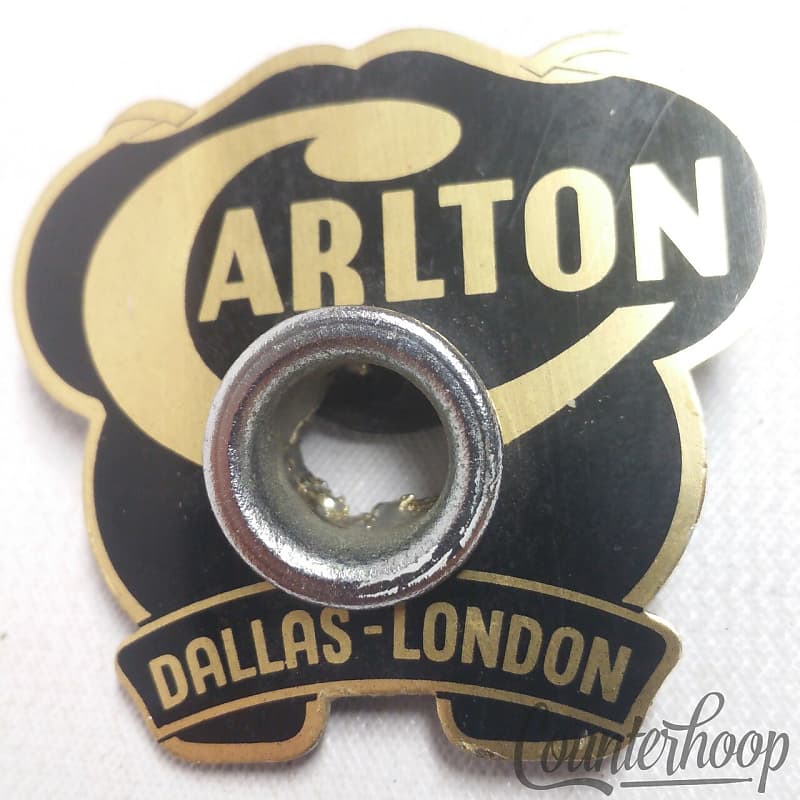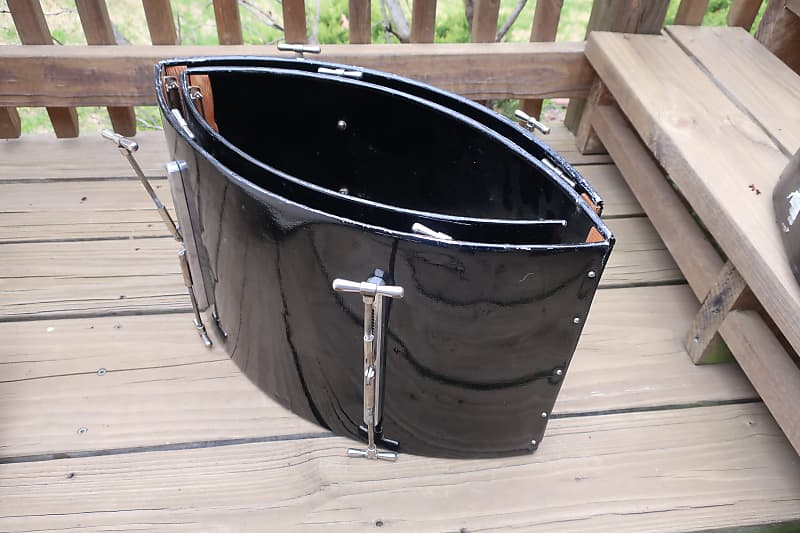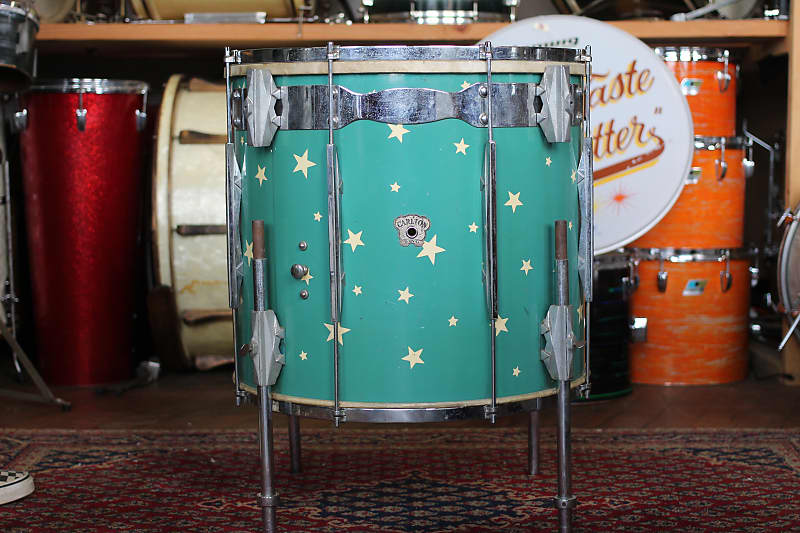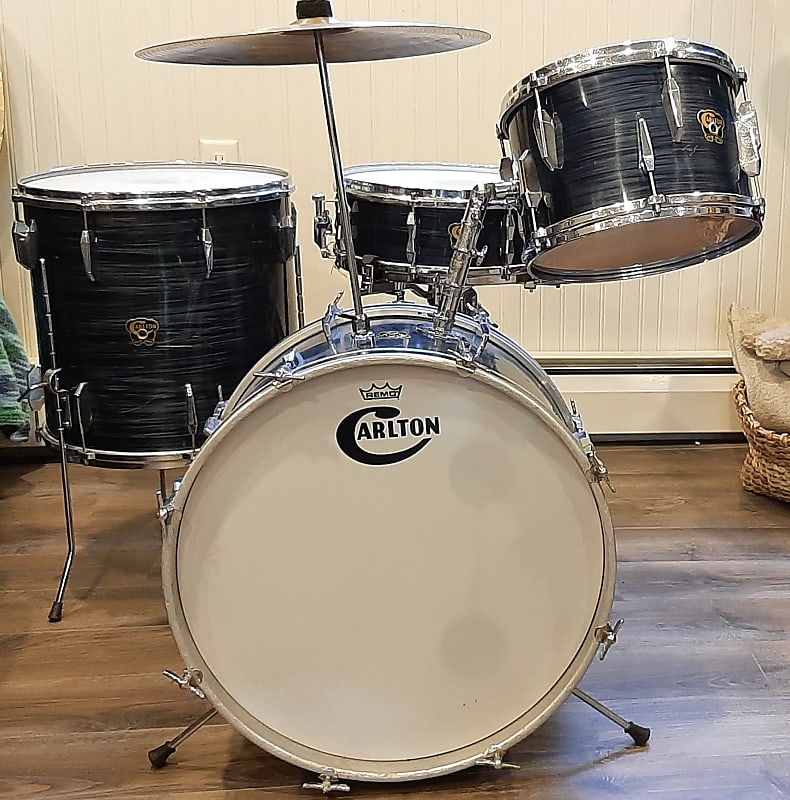Last time in this series about lost British drum brands we met Ajax, whose heyday was in the ‘50s. This time, our subject is John E. Dallas & Sons and the subsequent Dallas–Arbiter partnership.
Dallas scored in the late ‘30s and ‘40s with its Carlton drums, but by the ‘60s the brand was stagnating. In 1967, it was picked up and given a complete and unsentimental makeover by the serial entrepreneur Ivor Arbiter. He discarded the Carlton brand and launched the radically new Hayman, a genuine competitor to the American drums that were sweeping the board.
Early Stirrings
Our saga begins with John E. Dallas, a London-based wood craftsman who made banjos in the 1870s. Faring well, he welcomed his three sons into the business around the start of the 20th century.

The duly re-named John E. Dallas & Sons was later sometimes shrunk to the snappy if ugly brandname Jedson. The company continued to diversify and established itself as a significant distributor and manufacturer of musical instruments, moving around central London as it prospered.
John Dallas died in 1921, the year before Albert Della-Porta founded the Premier Drum Co—and one of Premier’s earliest contracts was to supply drums for Dallas to sell. By 1925, Premier had determined only to make drums bearing its own name, but it wasn’t until 1935 that the thriving Dallas empire came up with the Carlton brand with which to market its own much-admired drums and percussion.
So it was that in the late ‘30s and the immediate post-war period, Carlton was a more than credible alternative to Premier, taking its place in Britain alongside other competitors such as Ajax, Beverley, and John Grey.
Putting On The Ritz
While mid-‘30s Europe raced toward the catastrophe of world war, those with money made hay. Wealthy hotel patrons danced and scoffed to stiffly attired orchestras fronted by preening big-name bandleaders.

The Carlton hotel, located on the corner of Pall Mall and Haymarket in London, was the height of fashion. It was owned by César Ritz, formerly of the Savoy, and boasted the numero uno chef Auguste Escoffier. Thus when Dallas launched full-on into manufacturing percussion, it chose Carlton as the name to make the biggest splash.
Premier was racing ahead—backed by wealthy hotelier friends, as it happens—when Carlton appeared as if from nowhere with an extensive and imaginative catalogue catering for all tastes and levels. The top-line Prince Dual and Prince Single (snare action) side drums were Leedy-inspired designs, but gorgeous nonetheless.
Novelty and ingenuity were there, too, not least Carlton’s Octagonal bass drum with its own base console and flat top, ideal for a traps tray. Equally unusual was the easy transportability of the Warwick Collapsible Bass Drum with its metal shell and folding vellums that tucked into an ellipsoid case which was "smaller than a side drum."

Image was all, and Carlton again went to town, offering 13 finish options that included such humdingers as Blue Rhapsody, Waterwave (Green), and Streamflow (Gold), as well as Silver Butterfly Wing, which gets my vote for most beautiful finish ever, and Mirror Chrome, which was decades ahead of its time.
All this allowed Carlton to bag the most celebrated British drummer of the ’30s, one Joe Daniels, a committed showman who, I kid you not, once played a solo using table napkins. Daniels was reputedly paid £100 per year (about $9,000 today) to move from Premier to Carlton.
Tighten Your Belts: Post-War Austerity
After World War II, Carlton like other UK manufacturers graduated from copying Leedy to molding its own Art-Deco/Streamline elongated lugs. Finishes were restricted by economics but still distinctive, featuring gaily colored star motifs.

Creativity continued with the All-In-One Combination, specifically designed for Jackie Greenwood to play "Indian War Dance" in the musical Annie Get Your Gun, premiered at the London Coliseum in 1947. It was a bloated cocktail-style kit based around Carlton’s 20x20-inch dual-purpose bass drum/floor tom with a timpani-style footpedal tuning mechanism and bracket-supported King snare drum. In fact, Carlton specialized in oversized drums, with King toms ranging from 12x12 to a scarcely believable 18x22.
By the late ‘50s, however, Carlton’s graceful lugs were replaced by much stubbier and bulbous castings, which were nothing like as pretty. The stylish earlier lugs were relegated to a second "Orchestral" line called President. Meanwhile, Dallas/Carlton had another string to its bow with the Gaelic pipe-band drums that fared well for a time.
Enter The ’60s
With new skiffle and rock relentlessly knocking the old order, the most visible arm of Dallas drums in the early ‘60s was reduced to the Gigster line, a cheap and basic starting point for many. Single-headed Gigsters in red, green, or blue Glitter finishes filled a vital role and were seen everywhere in Britain, enabling Ian Paice, Bill Bruford, and numerous other whippersnappers to get a foot on the pedal.

When rock really exploded in the mid ‘60s, Carlton suffered the same fate as other UK marques identified with an earlier, grayer era that was simply uncool, man. Carlton became another also-ran with barely a handful of credible endorsees, with Bobby Graham the most prominent.
Bobby may have been a top rock session drummer, but he was barely known to the public. He was a larger-than-life character who drove the pivotal 1964 Kinks hit "You Really Got Me." Bobby’s appropriately named Big Beat kit continued Carlton’s characteristic tradition of oversized toms, and unusually it had two top toms—12x10 and 14x12—plus a 16x21 floor tom.
Generously proportioned Carlton toms also made a rare appearance on Clive Bunker’s bitser kit, along with an Ajax NuSound bass drum and Premier snare, as Jethro Tull kicked off The Rolling Stones’ TV extravaganza Rock And Roll Circus in 1968.
Vibrasonic George Hayman
Dallas was now at a loss as to what to do with Carlton, allowing the extraordinary Ivor Arbiter to seize his chance. As the man who had successfully imported Ludwig into the UK, he well understood the deficiencies of Britain’s home-grown product. When he went into partnership to form Dallas–Arbiter Ltd in 1967, he got his hands on the Carlton factory in Bexleyheath, south-east London.
Ivor’s mission was to break with UK traditions and, just as Carlton had done back in the ‘30s, to embrace the more desirable current American style. Ajax had the same idea with its 1966 NuSound range, as we saw in the previous episode, but Ivor was more savvy. As well as signing mature jazz drummers for promotion, he roped in the hipper new names.

Ivor put together a clued-up design and promotions team to build a British drum line as attractive as those of the American brands. Carlton was quietly consigned to history and replaced by Hayman. At first the name was George Hayman, and there were experiments with metal shell-liners to increase volume. But by launch time, in the fall of 1968, the shells had white-painted "Vibrasonic" interiors—like Ludwig’s Resa-Cote, but thicker and harder.
In fact, Hayman encompassed several staple features of US drums, including separate lugs, triple-flanged hoops, ten-lug snare, international sizes, stronger spurs and tom mounts, and so on. All of which would have counted for little if the image had not been right. Vitally, the image was stunning, with block-color metallic wraps, circular George Way/Camco-like lugs, and lightning-bolt sculpted bass drum claws.
When I bought my Solid Silver Hayman Big Sound kit in 1970 from the Selmer shop on London’s Charing Cross Road, my bass-playing friend said it looked like a spaceship. Sold with Remo heads, it was louder than Premier, and harder, hollower sounding as a result of that Vibrasonic lining. The wood snare was piercingly brittle on top yet fat and snare-y beneath, cutting through the deafening new amps. Ludwig and Premier finally had serious competition. For just a few years, Gold Ingot, Solid Silver, Midnight Blue, and Regal Red Haymans sold aplenty.
Highlights of the brief but stellar Hayman era are numerous, but here’s a couple of examples you can see on YouTube that illustrate the versatility of these radical drums. First, check out a sweat-soaked Simon Kirke, unforgettable as he absolutely leathers "All Right Now" with Free at the 1970 Isle of Wight festival.
Second, there’s the superb but underrated Aynsley Dunbar playing Hayman a few years later with David Bowie and Mick Ronson on The Midnight Special. And let’s add a listening session: 17-year-old Richard Bailey and his astonishing tour de force throughout Jeff Beck’s Blow By Blow album in 1975.
What Could Possibly Go Wrong?
Ivor Arbiter never stood still, and he courted many a controversy. He parted company with Dallas at the height of Hayman’s success as early as mid 1973. Hayman soon foundered.
Premier, which had been shocked into action by Hayman’s success, came on strong with smart new designs, and Hayman, devoid of its original dynamic team, washed up around 1975. Ivor moved on to CBS–Arbiter, whose main drum line was American Rogers, and he focused on his pet project, the far less successful Autotune.
Meanwhile today, Carlton drums are rare finds, but they offer quality and something unique. Hayman has always garnered fans as succeeding generations pick up on the vintage bug—and no better endorsement exists of that than the recent sightings of Sarah Jones, drummer with mega-popstar Harry Styles, on stage with her Gold Ingot Hayman.
About the author: Geoff Nicholls is a musician, author, journalist, and lecturer based in London. He played drums on BBC2 TV's award-winning Rockschool in 1984 and 1987 and wrote Byte The Music for BBC Radio 3, which won first prize at the New York Radio Festival in 1994. His books include The Drum Book: A History Of The Rock Drum Kit (2007) and The Drum Handbook (2003), and he is a regular contributor to Rhythm magazine.
